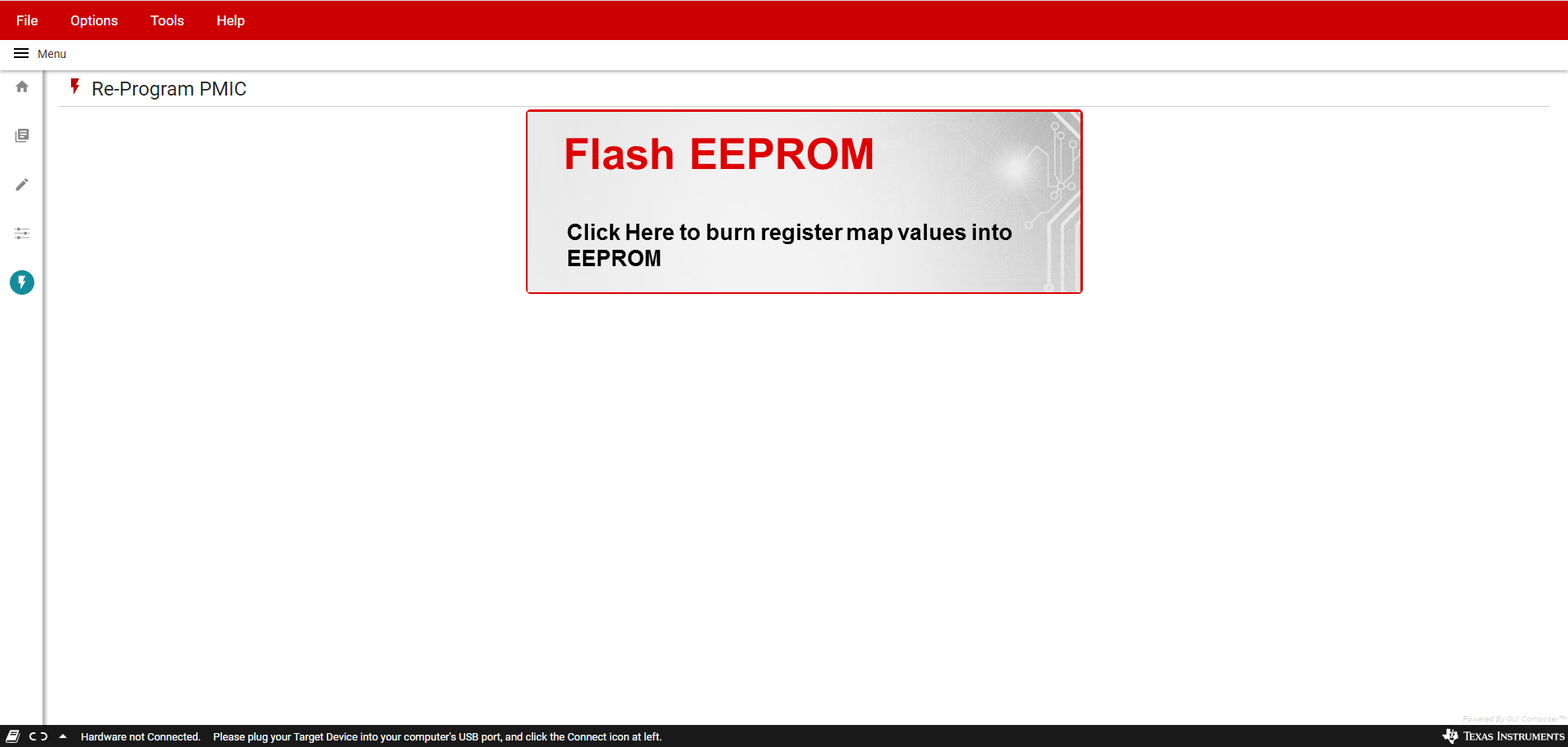SLVUCG6 November 2022 TPS650350-Q1
- TPS650350-Q1 EVM User's Guide
- Trademarks
- 1 Introduction
- 2 Requirements
- 3 Operation Instructions
- 4 EVM Configurations
- 5 Test Points
- 6 Graphical User Interface
- 7 Typical Performance Plots
- 8 TPS650350-Q1 EVM Schematic
- 9 TPS650350-Q1 EVM PCB Layers
- 10TPS650350-Q1 EVM Bill of Materials
6.2.5 Re-Program PMIC
The Re-Program PMIC section contains a button for sending the EEPROM Program Command to the device. After the EEPROM Program Command is sent, the device stores the existing register configurations permanently, and the PMIC automatically restarts with the latest settings. The device can be re-programmed multiple times to evaluate various configurations.
 Figure 6-13 TPS6503xx-Q1 GUI Re-Program PMIC Page
Figure 6-13 TPS6503xx-Q1 GUI Re-Program PMIC Page